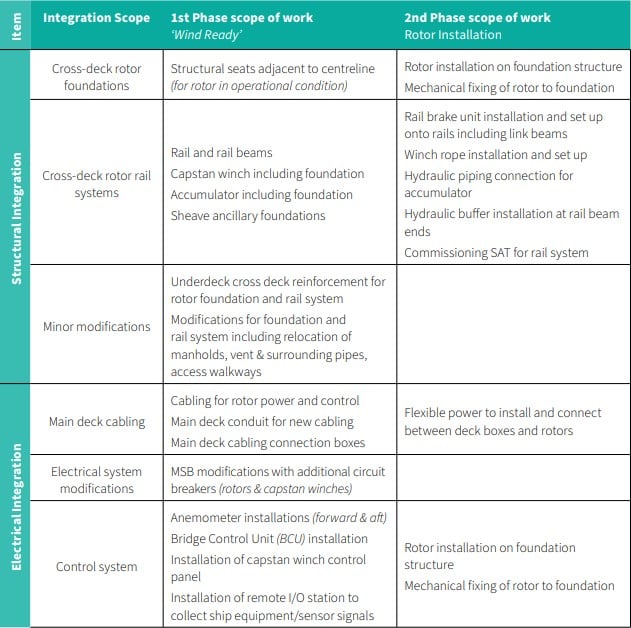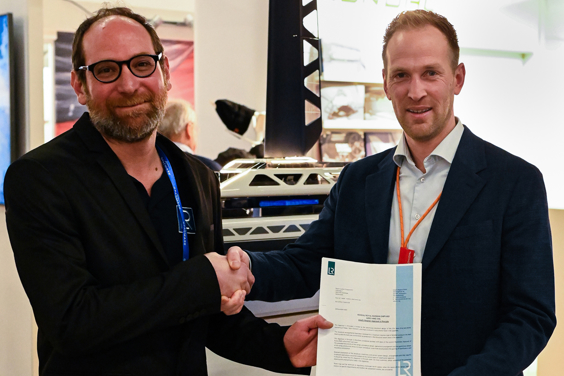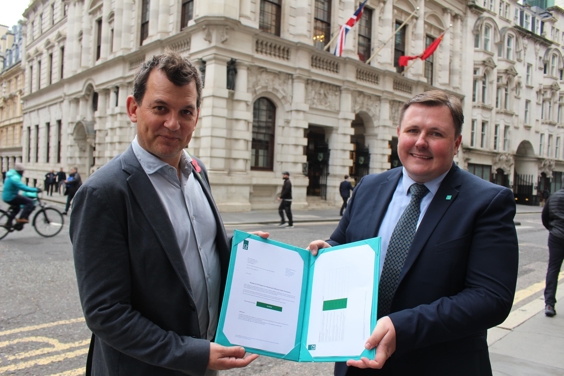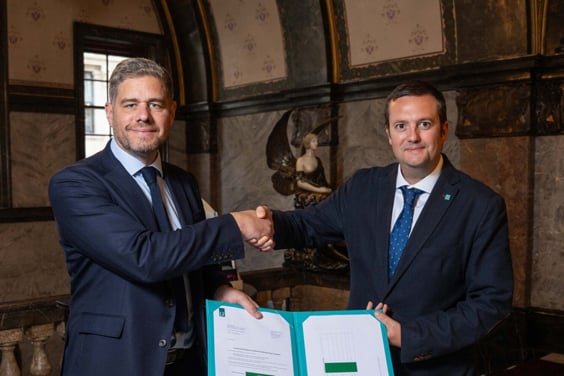Wind-assisted propulsion systems (WAPS) are gaining momentum as shipowners seek to improve environmental performance and reduce exposure to emerging carbon costs. But conversions using new technology can be challenging. And with shipowners juggling lead times and yard slots alongside the best time to take busy vessels off-hire, it’s little wonder that pressure can mount on what should be the driving motivation of a project – ensuring a design and integration that both maximises fuel savings while ensuring compliance.
Over the course of three installations with WAPS provider Anemoi, Lloyd’s Register has honed a process that manages complexity while also delivering the compliance assurance that shipowners need. As these projects featured rotor sails installed on bulk carriers of multiple sizes, they offered an ideal opportunity for LR to develop best practices for an important and growing market sector.
The processes have worked well, according to Tufton Investment Management, owner of Kamsarmax bulker TR Lady, which was fitted with Anemoi rotor sails in 2023. Tufton Chief Investment Officer and President Nicolas Tirogalas notes that the company’s collaboration with LR and Anemoi facilitated the installation of the rotor sails while minimising off-hire challenges from COVID-19 related supply chain disruptions.
We are encouraged by the initial results from the rotor sail operations, which show savings in line with our original expectations, and we continue to work closely with LR and Anemoi to fine-tune rotor sail operations and maximise fuel savings.
Pioneering projects
In a 2018 installation, four prototype Anemoi rotor sails each measuring 2.1m diameter and 16m in height were installed on geared Ultramax bulk carrier Afros. The rotor sails were to be moved into position and stowed using electric trolley on longitudinal rails on the upper deck, outside the line of hatch openings on the starboard side. In 2023 three second-generation Anemoi rotor sails, each measuring 5m diameter and 24m in height, were fitted to the Kamsarmax bulk carrier TR Lady. The arrangement used an electric winch to deploy the sails on three transverse rails fitted to cross-deck strips between hatch openings. The project was executed in two phases with a ‘wind ready’ modification of the ship in November 2022, with rotor sails installed in June 2023.
Finally, in October 2024 five sails – further iterations on Anemoi’s second-generation design – were installed on the Valemax very large ore carrier (VLOC). Deployment of rotor sails, each measuring 5m in diameter and 35m in height, was achieved by hydraulic folding, with stowage in cross-deck strips between hatch openings. At 400,000 DWT and 360m in length, the VLOC is the largest vessel to date to have WAPS installed.
Each vessel differed significantly in terms of the size, the deployment system and the number and the size of the Rotor Sails and this gives us a wide range of insights to draw on.
Optimising installation process
The ‘wind ready’ phase carried out for TR Lady is an important example of how the installation process can be made less burdensome and easier to plan for shipowners, with the bulk of work performed long before the sails themselves are fitted. ‘Wind-ready’ phase integration work included all steel work and outfitting modifications covering rotor sail foundations and cross rail systems, as well as relocation of deck outfitting items such as vent pipes and access walkways. On the electrical integration side, all cabling, connection boxes, bridge control unit and anemometer were also installed, ready to be connected once the rotor sails were fitted.
The table below shows how integration was split into two phases, ensuring that sail installation could be carried out as efficiently as possible and with minimal impact to the ship’s schedule. With most structural work completed during phase one, the final lifting of sails onto the ship was completed in just two days.

Getting the rig right
For all the complex challenges that can be thrown at a vessel facing a WAPS retrofit, owners must not lose sight of the prime focus: to reduce fuel costs. The first step is to settle on a rig configuration that minimises disruption to the way the vessel is currently operated. The potential of sail interference with shore side and shipboard cargo gear, as well as air draft limitations for port approaches, is a case in point.
The chosen deployment system will be crucial in avoiding these challenges. Deployment systems include sails folded from vertical to horizontal by hydraulic cylinders and sails moved on rails controlled by an electric trolley or winch. The three cases of LR-classed bulk carriers with Anemoi rotor sails include examples each of these type of deployment systems.
Countermeasures to address interference issues may also include limitations of sail height within the ship’s original air draft and sail installation clear of deck mooring lines and equipment. For unobstructed cargo operations, the mounting or stowing of a sail outboard has been a popular choice for early installations.
Ensuring compliance
Only once an appropriately sized and well-operable configuration has been defined should compliance issues be checked. This is because regulatory
impacts are specific to the type, size, deck position, and number of wind assistance rigs.
Wind assistance installation will undoubtedly impact the ship’s regulatory compliance. And securing compliance will not necessarily be straightforward. In the three cases studied here, the original regulations at time of implementation, especially those related to navigational safety, did not consider wind assistance rigs and consequently required the consideration, and justification, of alternative solutions or exemptions.
The navigational safety aspects of ensuring compliance in particular often drive modifications to original integration designs. For example, the Panama Canal Authority requires vessels to equip steering ranges with a fixed blue light that is clearly visible from the bridge along the centreline. On TR Lady, the centreline position of rotor sails obscured visibility of the forward blue Panama Canal light from bridge. The solution was to install port and starboard blue lights, as allowed for by ACP vessel requirements.
In two projects, the installation of rotor sails would have obscured forward visibility of the aft main mast head light. For the VLOC, a vertical extension of the main mast to increase aft masthead light height was adopted. On TR Lady, where the ship’s air draft and rotor sail height were restricted by a Mississippi River bridge, a port and starboard split main mast head light was proposed. This alternative arrangement was accepted by Marshall Islands flag.
Arguably one of the more onerous regulatory compliance issues for ships installing wind-assisted propulsion systems is the requirement for re-examination of ship stability with lightweight and longitudinal centre of gravity (LCG) and vertical centre of gravity (VCG) changes to the requirements of SOLAS II-1, Subdivision and Damage Stability Regulations.
The VCG changed for both TR Lady and the VLOC (and in case of TR Lady lightship weight also increased), requiring an inclining experiment to be carried out. For a ship in retrofit and out of service, the execution of an inclining experiment for re-examination of ship stability can be especially challenging. Inclining experiments usually require calm conditions with no wind and are typically carried out overnight in dead ship conditions with loose moorings. An inclining experiment can be considered at the ‘wind-ready’ retrofit phase and was carried out in November 2022 for TR Lady.
Smoothing integration
Any wind retrofit will involve modifications to the vessel at the interface of the sail and deployment system. These are likely to include structural as well as electrical system updates and, in case of hydraulic folding deployment systems, possible modifications to the ship’s deck hydraulic system. All modifications at the sail-to-ship interface are subject to approval and survey by class to ensure their rules and regulations are still met by the newly WAPS-enabled vessel.
The major element of structural work for sail integration was to incorporate deck foundations and seats for the wind assistance sail in seagoing operations. Detailed calculations and structural analysis were carried out to ensure that sail loads are efficiently supported by the deck foundations and seat structures. For structural continuity the deck foundation and seat structures should ideally be aligned with primary structural elements of ship, such as underdeck web frames and transverse bulkheads.
In the case of the VLOC, which had very large side wing ballast tank spaces, care was taken to ensure that the deck foundation was precisely aligned with, and landed on, underdeck supporting structures to minimize the necessity of steel working within side wing spaces. Modifications are needed to the ship electrical system, including main switchboard, so that the rotor sail can draw power from the ship to operate. Calculations and drawings as part of the electrical integration documentation package include ship electrical system update, electrical load balance update and short circuit calculations. Deck wiring modifications are also made, to run electric cable to the sail deck seat from the ship’s supply.
Sailing on
The installation of sails on TR Lady highlights how the final stages of the project are simplified by the splitting of the retrofit into a ‘wind-ready’ and sail installation phase.
Prior to sail installation in June 2023, a full-scale testing site was established with an identical configuration to that being installed. The rotors were run at full speed and balanced, and the lift and drive system of the deployment mechanism tested, before the arrival of the vessel at the yard, reducing work onboard.
The land-based testing forms the basis of the Factory Acceptance Test (FAT), with several other features – including emergency stop, local control and bridge control – and software settings also tested on land. Once the FAT was completed, the rotors were lifted directly from the dockside onto the vessel.
On the vessel, phase one preparatory work included shimming the foundations as well as a survey to ensure that levels and geometrical tolerances have been achieved in line with the drawings. A survey confirmed levels and geometrical tolerances from modifications completed in November 2022 during the wind-ready phase of the project.
During phase two, the first rotor sail was then lifted off the test bed to the foundation position on the vessel. The rotor sail was bolted down at the anti-uplift device (AUD) location and, once completed, the crane was detached and the process repeated for the remaining rotors. The lifting process for TR Lady took 1.5 days, with one rotor installed on the first day and the remaining two rotors on the following day.
Once in position the connections for power and data were made. Umbilical cables supplied with the rotor sails were hooked up to deck boxes on each cross-deck strip. As the modifications to the main switchboard and installation of the bridge control unit (BCU) had been completed at the 'wind-ready’ phase, these systems were immediately ready for commissioning.
The Harbour Acceptance Testing (HAT) follows similar protocols to the landside FAT with the addition of vessel data. The HAT is concluded once all safety checks and tests are conducted on the rail deployment system, the interfaces between the ship’s data system and the sail control system, and rotor sails while spinning.
Applying the learnings
LR’s experience and practice of rotor sail installations to bulk carriers has provided some important lessons. The first and most apparent is how close cooperation between class, technology provider and shipowner paves the way to successful, smooth-running conversion projects, regardless of which wind technology is installed or what type of vessel they are installed on.
The TR Lady is operated by Cargill Ocean Transportation under time charter.
The value of the partnership with Anemoi and LR is that we now have a vessel that is capable of achieving notable emissions reductions; together with an independently verified method for quantifying those reductions each voyage
Wind-readiness as a concept – effectively separating integration work and sail installation into two distinct projects – offers multiple benefits across the conversion and should be more widely adopted. While the early completion of essential integration elements is a pre-requisite, there is a strong argument that elements of regulatory compliance should also be included at ‘wind ready’ phase or even earlier.
Since installing the solution, clients have seen up to 15% fuel savings, leading to cost reductions and more sustainable operations. Our collaborative relationship with LR ensures that we deliver exceptional results for our clients, whether that is navigating complex challenges or meeting tight deadlines.











